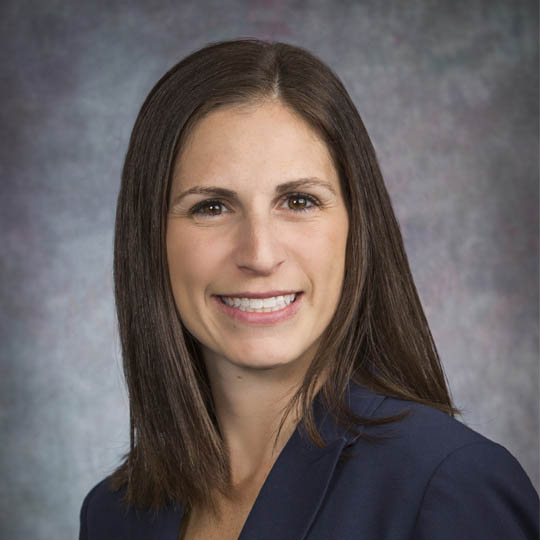COVID-19 news and updates
St. Luke’s advances telehealth services in the push against COVID-19


“Tell me what’s going on today.”
Those who know him would recognize this invitation as a normal part of Dr. Trevor Satterfield’s medical practice.
Dr. Satterfield, a family medicine physician, works from a clinic at St. Luke’s Magic Valley.
Where he is, however, may not be as meaningful as it once was. And while he’s got both feet planted on the carpet in Twin Falls, he’s stepping into St. Luke’s future; the invitation, in this case, is to a patient he’s visiting with virtually, via a video telehealth call.
St. Luke’s has steadily expanded its virtual care offerings over the past several years. That systematic expansion put the organization in a strong position to respond to needs stemming from the COVID-19 pandemic.
Dr. Satterfield readily saw the advantages and the desirability, given the situation.
“The safest place for our patients to be is in their homes, minimizing their contact with others and thereby slowing the spread of the coronavirus,” he said.
With health-care needs evolving quickly during this unprecedented time, providers are finding new ways to connect with their patients.
Telehealth within St. Luke’s Health System isn’t a new concept, however, and Krista Stadler, senior director of Telehealth Services for St. Luke’s, notes that COVID-19 has underscored the value of virtual care programs outside the organization’s sphere.
“We are thrilled to see national and state leaders embrace the value of telehealth for our patients,” Stadler said.
“Their willingness to temporarily remove the barriers and restrictions that prohibited us from rapid and broad expansion in the past will play a critical role in supporting our patients and our caregivers during this public health emergency.”
St. Luke’s has been working quickly to expand video visits and other electronic ways of gathering information and interacting with patients remotely.
“As part of the coronavirus (COVID-19) response plan, telehealth services were brought online for a large group of clinics within two weeks,” said Makenzie Hall, director of information technology for St. Luke's Health System.
Since the end of March, 850 providers have been brought online with telehealth services.
“It was a heroic effort from our ambulatory IHT team,” Lucy Dennis, vice president of operations for St. Luke's physician services, said.
Clinicians in all specialties, along with family, internal medicine and behavioral health practitioners, now can make telephone “visits” and use telehealth services that incorporate video. Staff members and patients tap in through St. Luke’s MyChart.
The technology incorporates additional features that benefit providers and patients as well.
“Providers can refill medications, review laboratory or imaging studies that were performed prior to the visit, and even perform limited elements of a physical exam through a video visit,” Dr. Satterfield said.
St. Luke’s McCall family medicine physician, Dr. Dave Hall, sees as many as 15 patients a day through video or telephone visits. He wasn’t the obvious ambassador for the virtual tools.
“I was hesitant to transition to this new model of care,” he recalled. “I didn’t think it would be good for me and I didn’t think my patients would like it.
“During my first face-to-face video conference, I was surprised that it went so well. You can see facial expressions and body language, which can tell you a lot about how the patient is feeling. Having the visual cues is really helpful.”
The services are proving popular among patients and clinicians alike.
As of April 6, St. Luke’s Health System providers had taken part in more than 1,500 video visits within the past two weeks.
And there’s more to come. St. Luke’s plans to add MyChart video visits for additional clinics and features that allow patients to submit pictures and media related to a symptom or condition, Hall said.
“MyChart video visits are assisting us to provide safe care, in a safe environment, during this COVID crisis, and is a sustainable strategy to bring more consumer-driven care to our communities,” Dennis said.
“It is not going away.”
For Dr. Satterfield, the goal remains the same, whether the visit is in person or through a computer or smart phone: great patient care.
“I have to say it is very satisfying to realize that I helped my patients with their anxiety, diabetes, high blood pressure or other health condition without increasing their risk of suffering from COVID-19,” Dr. Satterfield said.
“St. Luke’s Health System is dedicating a lot of effort to combat COVID directly,” he said. “We, the health-care providers across St. Luke’s, are committed to be good citizens and encourage social distancing while still trying to meet the medical needs of our patients in the safest way possible.”
To learn more:
- Call your local St. Luke’s clinic to see what options you have for your next visit.
- Prepare for an appointment
- Prepare for a video visit
About The Author

Michelle Bartlome is the public relations manager at St. Luke's Magic Valley.


